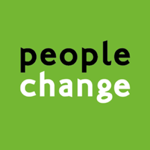Bert-Jan ter Hofte works with People Change for 5 years
For more than five years, Bert-Jan ter Hofte has been working intensively with the People Change Scan and approach with clients from multinationals to SMEs in the profit sector and from universities to municipalities and the police in the public sector. There are three reasons why he enjoys doing this and why clients see the added value.
1) Entrepreneurial network organisation
“We work from People Change in an entrepreneurial network organisation. This really appeals to me. As entrepreneurs, everyone works from his/her strengths and strengths, but also from the awareness of his/her pitfalls, in collaboration on projects for clients and the organisation. This means we put maximum effort into personal development of ourselves. This focus and the way we do this is exceptional. I find this ‘practice what you preach’ very appealing and although it demands a lot from you – it is not the path of least resistance – these investments in my own awareness result in a steep development curve. And I wouldn’t have it any other way either. From my entrepreneurship, I started this year’s “Strategic Leadership for Sustainable Change” course – the People Change change coach and facilitator course – and we will start another new course in February.”
2) Clients become ‘Fit for the Future’
“Important in leadership development and change is to have a concrete and measured starting point of all individuals and teams. To have the insight: where are we now?
The tendency in programmes is often to spend more time and energy talking to each other about the desired leadership development and culture in the organisation and not enough time and energy in making the starting point of each person and teams concrete.
The results of the People Change Scan at individual and team level provide a concrete starting point for leadership and change interventions: we believe in designing and implementing change interventions together and also in measuring their results and effects.
In the organisations where I work with the People Change scan and approach, clients and leaders know that they cannot ‘order’ a process for their people, but that change interventions are always designed in co-creation with them. So that we devise and implement the right, powerful and results-oriented interventions.
With clients, we also train People Change Practitioners who can coach people and facilitate teams completely independently using the People Change Scan and approach. They can start guiding changes in people and teams themselves and at the integration phase they take over responsibility for the desired programme. It has then become a “Do It Yourself” programme, permanently increasing the change capacity of leaders, professionals and teams in the organisation. They have therefore become more ‘Fit for the Future’ in change.
In some municipalities and other organisations, people are trained by me right from the start in an open Learning Course as People Change change coach and facilitator so that from the very beginning in leadership development and in designing and implementing change interventions, they can do this entirely independently within their organisation.”
3) Positive business case
My belief is that successful change requires ‘the business case of awareness and energy’ to be made at individual level and team level. What really appeals to me is that we can measurably contribute to people’s ‘fit’ and also measure how investing in a better ‘fit’ pays off.
To what extent are leaders and professionals aware of their change capacity and ‘fit’ with the organisation? And to what extent do those leaders and professionals have the energy to work on their personal development and the development of others? And what about the team’s change capacity, and which phases of team development has the team successfully gone through and which have not yet? Which mindsets and skillsets can they successfully use normally, but especially under pressure? Which mindsets and skillsets do they exhibit authentic exemplary behaviour? Which change styles do they master well and which not so well?
The People Change Scan gives them a mirror with these insights and I have not yet come across any other scan that indicates this so clearly and correctly.
What appeals to clients is that we make this very concrete: part of the People Change scan is the People Change ‘fit’ factor in which we measure the individual’s ‘fit’ with the organisation with 1 mark from 0-10. This figure largely determines how much energy people have to work on change and also determines how you can coach these people to do so effectively.
Organisations in the profit sector and in the public sector realise how important it is that their leaders and professionals have a good ‘fit’ with the organisation – especially in times of scarcity and in the current ‘war on talent’.
Through a coaching conversation about the components of the ‘fit’ such as we can look at where it can be improved in a targeted way, and better ‘fit’ also reduces turnover and absenteeism. During our coaching conversation, they can draw inspiration from this for their leadership development, personal development and their ‘fit’ with the organisation.
Furthermore, we measure which change styles or change skills leaders and teams are highly developed and which are less developed. This allows you to connect to how people can and want to change and that determines to a large extent the success of change processes.
Because they do this methodically through the scan and approach, they can work short-cycle on their own behavioural change to use their strengths and stay out of their pitfalls, and they can work on their energy to develop themselves and others.
On 1 February 2023, we will organise a ‘meetup’ for the Learning Course “Strategic Leadership for Sustainable Change”. If you are interested in participating, you can email Bert-Jan at bert-jan@peoplechange.nl or call at 06-51087912.
